“Drone can carry how much weight?” This pivotal question opens the door to a world of possibilities in aerial technology and its applications. As drones continue to evolve, their ability to lift and transport various weights is transforming industries—from filmmaking and agriculture to delivery services and emergency medical supplies. This blog post explores the diverse capacities of drones, examining how much weight different types of drones can handle, what influences these capabilities, and the technological advances that might increase these limits in the future. Whether you’re a drone enthusiast, a potential drone buyer, or simply curious about drone technology, understanding the payload capacities of these devices is essential for appreciating their potential and limitations. Join us as we navigate the complexities of drone weight capacities to help you make informed decisions in this rapidly advancing field.
Table of Contents
Types of Drones and Their Carrying Capacities
When discussing “Drone can carry how much weight?”, it’s essential to consider the different types of drones available on the market. Each category of drone is designed with specific capabilities and potential uses in mind, influencing their maximum carrying capacities. Here’s a straightforward breakdown of various drone types and what they can typically handle in terms of load.
Consumer Drones
Description: These are the most common drones used by hobbyists and photographers. They are generally lightweight and designed for ease of use and portability.
Carrying Capacity:
- Small consumer drones, like the DJI Mini 2, can typically carry very little beyond their own camera, often less than 200 grams.
- Larger models, such as the DJI Phantom 4 or Mavic Air 2, might handle up to 500 grams, suitable for slightly heavier cameras or additional small accessories.

Professional Drones
Description: Used by filmmakers and commercial photographers, these drones are built to carry more sophisticated and heavier camera equipment.
Carrying Capacity:
- Mid-range professional drones like the DJI Inspire 2 can carry equipment weighing approximately 1-2 kilograms.
- High-end models designed for cinema-quality film making might handle payloads of up to 6-8 kilograms.
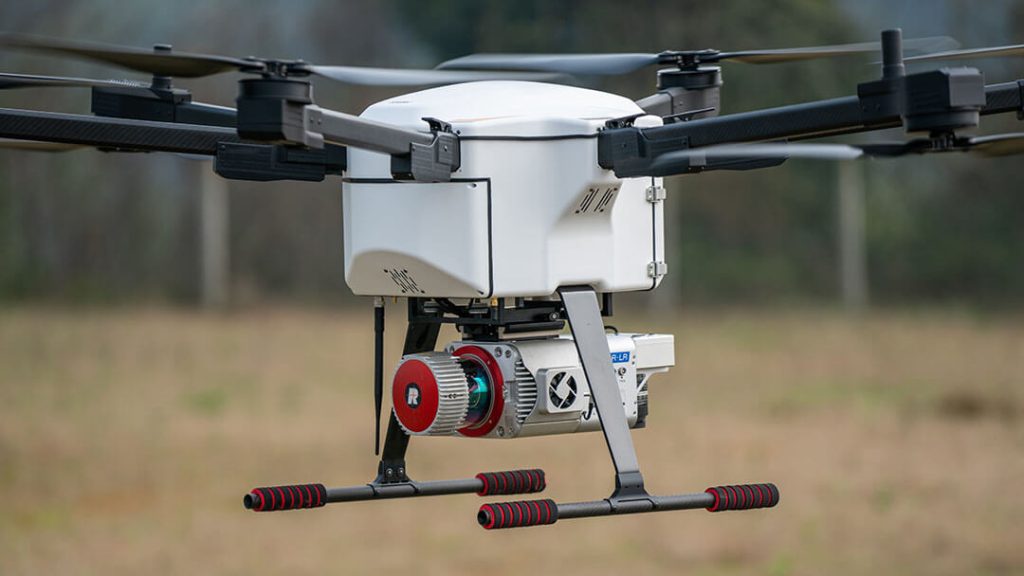
Industrial and Agricultural Drones
Description: These drones are engineered for tasks such as agricultural spraying, industrial inspections, or large-scale surveying, requiring them to carry heavier loads.
Carrying Capacity:
- Agricultural drones like the DJI Agras are capable of carrying heavy loads, typically ranging from 10-20 kilograms, necessary for carrying large volumes of liquid for pesticide or fertilizer application.
- Some industrial drones can handle even more substantial weights, especially if they are used for carrying equipment like LIDAR systems.
Delivery and Cargo Drones
Description: Emerging as part of the logistics and delivery industries, these drones are designed to transport goods and are built with the capacity to carry various weights.
Carrying Capacity:
- Delivery drones vary widely in their capabilities; some smaller models might carry as little as 2-5 kilograms, whereas more robust versions are being developed to handle 100 kilograms or more, aiming to revolutionize package delivery.
Conclusion
Understanding the carrying capacities of different drones helps users choose the right model for their needs, whether it’s capturing aerial photography, filming in high-definition, performing industrial tasks, or even delivering packages. Each type of drone serves a unique purpose and is equipped with specific features that determine how much weight it can safely carry.
By providing clear, visual comparisons and real-world examples of these drones in action, readers can better understand what to expect from their investments, ensuring they select a drone that best fits their operational requirements and budget constraints.
Consumer Drones: Models and Maximum Payloads
When exploring the question, “Drone can carry how much weight?”, it’s crucial to start with consumer drones, which are among the most popular and widely used types of drones. These models are primarily designed for photography and videography by enthusiasts and professionals alike. Here, we detail various consumer drone models and their respective maximum payloads, providing a clear guide for potential buyers.
Small Consumer Drones
DJI Mini 2
- Maximum Payload: Approximately 250 grams
- Description: Despite its lightweight design, the DJI Mini 2 is capable of carrying small accessories like propeller guards or a minimal camera setup.
Mid-Sized Consumer Drones
DJI Mavic Air 2
- Maximum Payload: Up to 500 grams
- Description: This drone strikes a balance between size and capability, offering more robust carrying capacity suitable for more extensive camera equipment or additional sensors.
Larger Consumer Drones
DJI Phantom 4
- Maximum Payload: Around 500 grams
- Description: Known for its stability and high-quality camera, the Phantom 4 can also handle significant payloads, ideal for advanced photography equipment.
Key Considerations
- Impact on Flight Performance: It’s important to note that as payload increases, the drone’s flight performance and battery life may decrease. Users need to balance the weight of their desired payloads with the expected flight time and control requirements.
- Safety and Regulations: Always ensure that the payload does not exceed the manufacturer’s recommended capacity to avoid risking damage to the drone or compromising its safety.
- Usage Scenarios: Consider what you aim to achieve with your drone—whether it’s capturing high-quality video, experimenting with aerial photography, or simply enjoying flying. The right drone for you will comfortably handle the weight of the equipment necessary for these activities.
Conclusion
Consumer drones offer a range of options concerning payload capacities, tailored to different needs and objectives. Whether you opt for a lightweight model like the DJI Mini 2 for quick flights and small cameras or a more capable drone like the Phantom 4 for serious photography, understanding the “Drone can carry how much weight?” for each model helps in making an informed decision. By choosing the correct drone for your intended payloads, you ensure optimal performance and longevity of your aerial equipment.
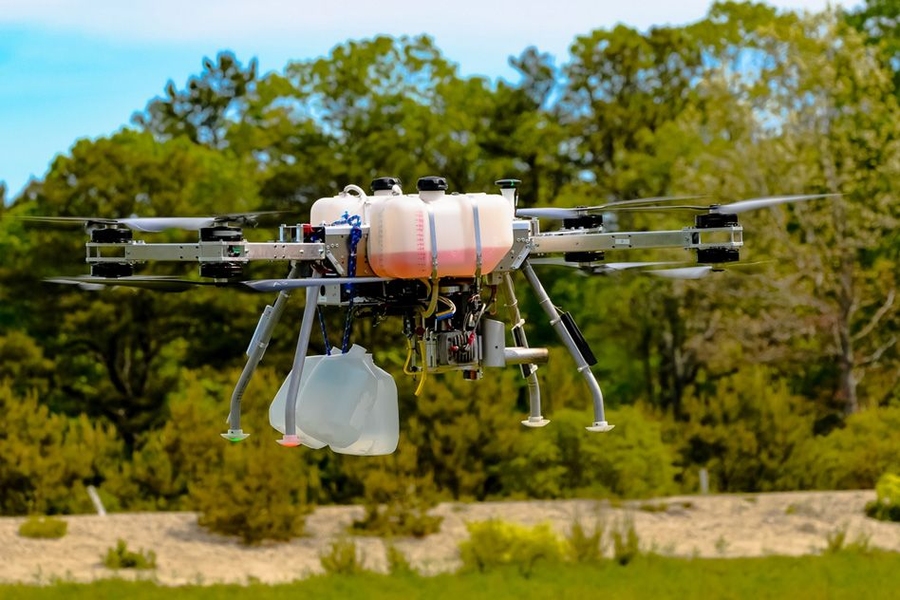
Professional Drones: Enhanced Carrying Abilities
When discussing “Drone can carry how much weight?”, professional drones stand out due to their enhanced carrying abilities. Designed for commercial photographers, filmmakers, and other professionals who require more sophisticated equipment, these drones offer greater payload capacities and advanced features. This section explores various models of professional drones and their payload specifics to give you a comprehensive understanding.
High-Capacity Professional Drones
DJI Inspire 2
- Maximum Payload: Approximately 2 kilograms
- Description: Ideal for professional filmmaking, the DJI Inspire 2 supports various camera configurations that demand stability and extended flight capabilities, making it perfect for high-quality aerial shots.
FreeFly Alta 8
- Maximum Payload: Up to 6-8 kilograms
- Description: Known for its robust design and multiple rotor configuration, the FreeFly Alta 8 can carry heavy cinematic cameras and accessories, offering unparalleled shooting possibilities for movie production.
Features Supporting Enhanced Payloads
- Advanced Stabilization: Professional drones often come equipped with sophisticated gimbal systems that provide superior image stabilization, crucial for maintaining quality when carrying heavy cameras.
- Stronger Motors and Enhanced Battery Life: To support additional weight, these drones include more powerful motors and batteries with higher capacities, ensuring that they can maintain longer flight times even with heavier loads.
- Rugged Construction: The build quality of professional drones is typically higher to accommodate the extra strain from larger payloads. This includes the use of durable materials that can withstand varied environmental conditions.
Usage Tips
- Pre-Flight Checks: Given their complex setups and significant investment, it’s essential to perform thorough pre-flight checks to ensure all components, especially payload attachments and battery connections, are secure.
- Regulatory Compliance: Always check local regulations concerning drone flights, especially for heavier drones that may fall under different legal requirements due to their size and capabilities.
- Professional Training: Operators of professional drones should consider undergoing formal training to handle these advanced machines safely and efficiently, particularly when using them in populated or sensitive areas.
Conclusion
Professional drones like the DJI Inspire 2 and FreeFly Alta 8 offer enhanced carrying abilities, making them ideal for serious filmmaking and aerial photography projects where high-quality output is paramount. Understanding the capabilities and limitations of these drones in terms of “Drone can carry how much weight?” helps professionals in selecting the right drone for their specific needs, ensuring both safety and quality in their aerial endeavors. By investing in these high-capacity drones, professionals can significantly expand their creative horizons and achieve remarkable results in their projects.
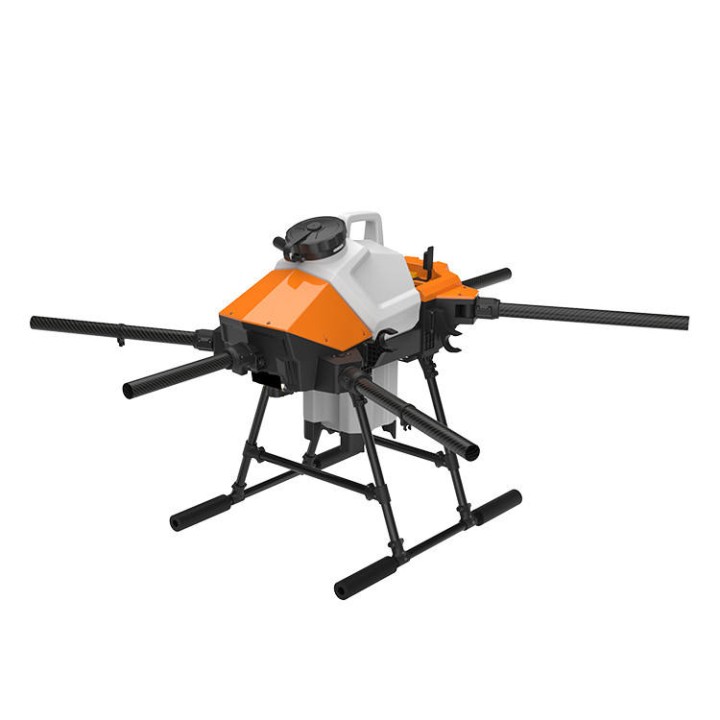
Industrial Drones: Heavy-Duty Uses
When considering “Drone can carry how much weight?” within the context of industrial applications, the capabilities significantly expand. Industrial drones are engineered for heavy-duty uses such as agricultural spraying, large-scale surveying, and industrial inspections, requiring them to handle substantial payloads.
Key Models and Their Capacities
DJI Agras
- Maximum Payload: Up to 10-20 kilograms
- Description: The DJI Agras is designed specifically for agricultural use, capable of carrying large volumes of liquids for pesticide or fertilizer applications. Its robust design and powerful motors ensure stability and efficiency during flight.
Matrice 300 RTK
- Maximum Payload: Approximately 2.7 kilograms
- Description: This drone is a popular choice for industrial inspections and public safety operations. It supports multiple payload configurations, including cameras and sensing equipment, making it versatile for various industrial applications.
Features That Enhance Industrial Capabilities
- Advanced Flight Stability: Industrial drones often incorporate sophisticated flight control systems that enhance stability, crucial when carrying heavy or sensitive payloads.
- Enhanced Power Efficiency: With the requirement to carry significant weights, these drones are equipped with high-capacity batteries and efficient power management systems to maintain longer flight times.
- Durable Build: The construction of industrial drones is tailored to endure challenging environments and heavy loads. Materials used are typically high-grade to resist wear and tear during intensive use.
Practical Applications
- Agriculture: Drones like the DJI Agras revolutionize farming practices by delivering pesticides and fertilizers precisely and efficiently.
- Construction and Surveying: Drones capable of carrying heavy payloads are also used in construction for aerial surveying, carrying sensors and cameras that map large areas quickly and accurately.
- Inspection and Maintenance: For industries such as oil and gas or public infrastructure, drones like the Matrice 300 RTK can carry inspection cameras and other sensory equipment to hard-to-reach areas, reducing human risk and increasing inspection efficiency.
Conclusion
Industrial drones are vital in scenarios where “Drone can carry how much weight?” is a critical question due to the demanding nature of their applications. Whether it’s aiding in agricultural production or conducting industrial inspections, these drones provide robust solutions that enhance productivity and safety. Understanding their carrying capacities and features enables industries to select the right drones that meet their operational needs effectively, ensuring optimal performance and reliability in their respective tasks.
Delivery Drones: The Future of Transport
As we explore the question, “Drone can carry how much weight?” within the context of the burgeoning delivery drone industry, it’s evident that these aerial vehicles are set to redefine traditional transport methods. Delivery drones are designed to transport goods quickly and efficiently over varying distances, depending on their design and payload capacity.
Overview of Delivery Drones
Amazon Prime Air
- Maximum Payload: Approximately 2.5 kilograms
- Description: Amazon’s Prime Air is designed to deliver packages up to 5 pounds in 30 minutes or less, using electrically powered drones. This service aims to enhance the speed of package delivery in urban areas, ensuring efficiency and customer satisfaction.
Wing (by Google)
- Maximum Payload: About 1.5 kilograms
- Description: Google’s Wing drones are used for a range of delivery purposes, from food to medicines, particularly in urban and suburban areas. The drones lower packages via a tether, combining speed with precision.
Capabilities and Features
- Rapid Deployment: Delivery drones can bypass road traffic and other terrestrial obstacles, enabling faster delivery times than traditional methods.
- Advanced Navigation Systems: These drones typically feature highly sophisticated GPS and vision-based navigation systems, allowing them to locate delivery addresses accurately and navigate around obstacles.
- Safety Features: To ensure safe operations, delivery drones are equipped with sensors that detect and avoid obstacles, robust fail-safes for power failure, and precise drop mechanisms to deliver goods undamaged.
Potential and Challenges
- Scalability: As technology progresses and regulations evolve, the scalability of drone delivery services could see significant growth, potentially making drone-based delivery a common sight in cities worldwide.
- Regulatory Hurdles: Currently, one of the biggest challenges facing delivery drones is navigating complex regulatory environments that vary significantly by region and country.
- Public Perception and Privacy Concerns: Winning public trust regarding privacy and safety is crucial for the widespread adoption of drone delivery systems.
Conclusion
Delivery drones represent a promising frontier in the logistics sector, poised to revolutionize how goods are transported. As we consider “Drone can carry how much weight?” in the context of these advanced machines, it is clear that their development and deployment could significantly impact delivery speed, efficiency, and convenience. By continuously advancing drone technology and addressing regulatory and societal concerns, the future of transport could very well be dominated by drones, making the delivery of everyday items faster and more accessible than ever before.
Impact of Payload on Drone Performance
When investigating how “Drone can carry how much weight?”, it is crucial to understand the impact that payload has on the overall performance of a drone. Carrying additional weight affects various aspects of a drone’s functionality, from its flight dynamics to its operational efficiency. This section delves into how increased payloads can alter drone behavior and performance characteristics.
Flight Time and Battery Life
Effect on Flight Time
- Description: The more weight a drone carries, the harder its motors have to work to maintain flight, which in turn drains the battery at a faster rate. Therefore, heavier payloads generally result in reduced flight times.
Flight Stability and Control
Effect on Stability
- Description: Additional weight can also impact the drone’s stability in air. A heavier or unevenly distributed load can make the drone more susceptible to shifts in weight due to wind or sudden movements, potentially leading to less stable flight.
Speed and Maneuverability
Effect on Speed
- Description: Payload weight directly affects a drone’s speed. Heavier loads require more thrust to move, which can slow down the drone’s speed and make it less agile.
Energy Consumption
Increased Energy Demand
- Description: Carrying extra weight increases the overall energy consumption of the drone. This is because more energy is required to generate sufficient lift and propulsion to carry additional mass.
Safety and Wear
Risk of Mechanical Wear
- Description: Heavier payloads can lead to increased wear and tear on the drone’s mechanical components such as the motors and propellers. This could shorten the lifespan of these parts and increase maintenance requirements.
Conclusion
Understanding the effects of payload weight on drone performance is essential for both amateur and professional drone operators. As “Drone can carry how much weight?” becomes a key consideration in drone operation, it is vital to balance the need for carrying capacity with the implications on flight dynamics and overall drone health. Operators should consider these factors when planning missions to ensure optimal performance and longevity of their drone equipment. By managing payloads wisely and adjusting flight plans accordingly, drone users can maximize efficiency while minimizing the risk of damage or instability.
Engineering Behind Weight Capacity
When evaluating how much weight a “drone can carry,” understanding the engineering principles that contribute to a drone’s weight capacity is essential. This aspect is crucial in designing drones that are not only capable of lifting various payloads but also maintaining performance and stability during flight. Here’s a detailed look at the technical factors and innovations that enable drones to handle different weights.
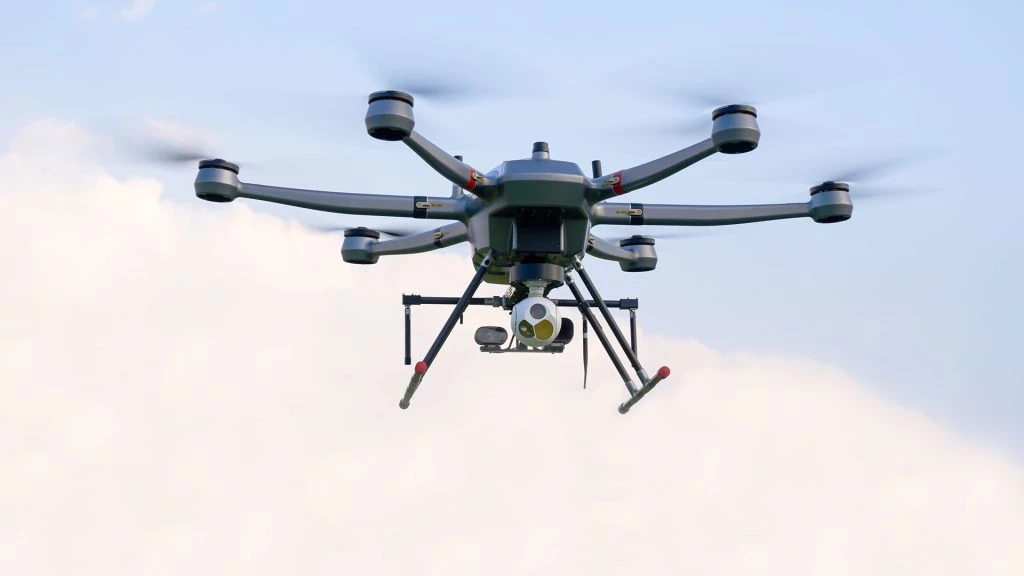
Key Components Influencing Weight Capacity
Motor Power and Efficiency
- Description: The motors are the heart of the drone, providing the necessary thrust to lift off and maneuver. Higher-powered motors can generate more lift, which is essential for carrying additional weight. The efficiency of these motors also impacts how much weight the drone can carry without compromising flight time significantly.
Battery Capacity
Importance of Battery Life
- Description: Batteries provide the energy required to power the drone’s motors. Larger batteries can store more energy, which is necessary to compensate for the increased power demands of carrying heavier payloads.
Structural Design and Materials
Frame and Build Quality
- Description: The drone’s frame must be strong enough to support the weight of the drone and any additional load. Materials such as carbon fiber are commonly used because they offer high strength-to-weight ratios, essential for maximizing payload capacity without adding undue weight.
Aerodynamics
Efficiency in Design
- Description: Aerodynamics play a critical role in how well a drone can carry weight. A well-designed aerodynamic drone reduces the energy needed to fight against air resistance, allowing it to use that energy to support additional weight instead.
Propeller Dynamics
Role of Propellers
- Description: Propellers affect how much lift a drone can generate. Larger propellers can push more air, which helps to lift heavier weights. The material and shape of the propellers also influence their efficiency and, consequently, the overall weight capacity of the drone.
Conclusion
The engineering behind a drone’s weight capacity involves a complex balance of power, efficiency, and design. Understanding how these factors interplay helps explain how a “drone can carry” various weights. For drone enthusiasts and professionals, knowing these details can aid in selecting the right drone for their needs—whether it’s for aerial photography, industrial use, or delivery services. By choosing a drone whose engineering is tailored to the demands of the intended payloads, users can ensure optimal performance and durability across diverse operating conditions.
Legal and Regulatory Considerations
When deploying drones, especially considering the “drone can carry how much weight?” question, it is crucial to understand the legal and regulatory frameworks that govern their use. Different countries and regions have specific rules designed to ensure safety and privacy while addressing concerns such as airspace management and equipment standards. This section outlines key legal and regulatory considerations that drone operators must be aware of.
Licensing and Registration
Requirement for Drone Registration
- Description: In many jurisdictions, drones above a certain weight require registration with aviation authorities. For instance, in the United States, the Federal Aviation Administration (FAA) requires all drones weighing over 0.55 pounds (250 grams) to be registered.
Flight Restrictions
Controlled Airspace and No-Fly Zones
- Description: Drones are typically prohibited or require special permissions to fly in controlled airspace, near airports, or in designated no-fly zones. These restrictions are put in place to prevent interference with commercial air traffic and enhance safety.
Payload Regulations
Weight Limits and Safety
- Description: Regulatory bodies often have specific rules regarding the maximum allowable payload that a drone can carry. These rules are designed to ensure that drones do not pose a hazard to public safety by overloading, which can affect their flight stability and control.
Privacy Concerns
Implications of Surveillance
- Description: With the increasing capabilities of drones, including those that can carry significant weights, privacy issues become more pressing. Laws often dictate how and where drones can be used to record video or take photos to protect individual privacy.
Insurance and Liability
Protecting Against Risks
- Description: Drone operators are sometimes required to have insurance, particularly when using drones for commercial purposes. Insurance can cover damages caused by drones or injuries to third parties, providing financial protection against potential liabilities.
Conclusion
Navigating the legal and regulatory landscapes is essential for any drone operator, particularly those handling drones capable of carrying heavier payloads. Understanding these guidelines not only helps in complying with the law but also ensures that drone operations are conducted safely and responsibly. Whether it’s by adhering to weight restrictions, respecting privacy norms, or securing the necessary registrations and insurance, legal diligence plays a crucial role in the effective and ethical use of drone technology.
Case Studies
To illustrate the practical applications and implications of the question “Drone can carry how much weight?”, we explore several case studies. These examples highlight how different industries utilize drones with various carrying capacities, showcasing their benefits and the challenges they overcome.
Case Study 1: Agricultural Drones for Crop Spraying
DJI Agras
- Description: The DJI Agras is an agricultural drone designed to carry heavy loads of pesticides and fertilizers over large fields. Capable of carrying up to 10 kilograms, it demonstrates how drones can significantly improve efficiency in farming operations by covering large areas quickly and distributing crop care products uniformly.
Case Study 2: Filmmaking with High-Capacity Drones
FreeFly Alta 8
- Description: Used extensively in the film industry, the FreeFly Alta 8 can carry sophisticated camera setups weighing up to 8 kilograms. This case study explores its use on a major film set, where it provided unique aerial shots that would have been impossible with traditional filming methods.
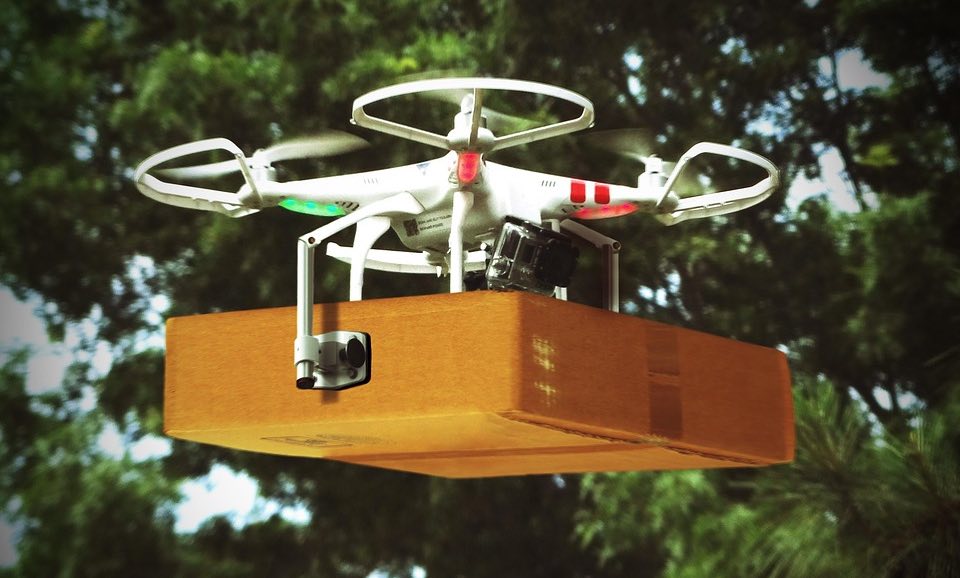
Case Study 3: Emergency Medical Supplies Delivery
Zipline Drones
- Description: Zipline operates drones capable of delivering medical supplies, including blood and vaccines, to remote areas. These drones can carry payloads of about 1.5 kilograms and have drastically reduced delivery times, proving essential in emergency situations.
Case Study 4: Construction and Infrastructure Inspection
Matrice 300 RTK
- Description: This drone is used for inspecting large-scale infrastructure projects. It carries various sensors and cameras that collectively weigh up to 2.7 kilograms. The case study could detail its use in inspecting a bridge for structural integrity, which helped in identifying potential issues without endangering human inspectors.
Conclusion
These case studies provide concrete examples of how different industries leverage drones based on their weight capacities. From improving agricultural efficiency and achieving cinematic innovation to delivering life-saving supplies and conducting safe inspections, the potential uses of drones are vast and varied. Each case study not only answers “Drone can carry how much weight?” in a real-world context but also highlights the transformative impact these technologies are having across sectors.
Conclusion – Drone can carry how much?
As we have explored throughout this comprehensive guide, the question “Drone can carry how much weight?” encompasses a wide range of factors and considerations. From the types of drones and their specific uses to the intricate engineering behind their capabilities and the legal frameworks that guide their operation, understanding drone carrying capacities is crucial for both enthusiasts and professionals in the drone industry.
Key Takeaways:
- Diverse Applications: The ability of drones to carry different weights impacts various sectors differently, from agriculture and film-making to industrial inspections and delivery services. Each application requires a careful consideration of the drone’s payload capacity to ensure optimal performance and safety.
- Technological Advancements: We can expect continuous improvements in drone technology, which will expand their carrying capacities and efficiency. Innovations in battery life, motor power, materials, and design will push the boundaries of what drones can achieve.
- Regulatory Compliance: It’s essential for drone operators to stay informed about the latest regulations and compliance standards in their respective areas. Understanding and adhering to these rules not only promotes safety but also enhances the credibility and sustainability of drone operations.
- Safety and Efficiency: Balancing payload with drone capabilities is critical to maintaining safety and efficiency in operations. Operators should always perform necessary checks and balances to ensure their drone setups are not only effective but also secure.
Future Prospects:
Looking ahead, the potential for drones in carrying increasingly heavier loads offers exciting possibilities. Whether it’s delivering larger parcels directly to consumers’ doorsteps or carrying more substantial equipment for professional photography, the evolution of drone capabilities is set to revolutionize how we think about transport and aerial assistance.
In conclusion, whether you are a hobbyist curious about what your drone can lift or a professional seeking to maximize operational efficiencies, understanding the capabilities related to “Drone can carry how much weight?” is fundamental. By keeping abreast of technological advancements and regulatory changes, you can harness the full potential of your drone, ensuring that it remains a valuable and versatile tool in your technological arsenal.
Appendix and Additional Resources
Further Reading, Learning and where I have sourced information for this post:
- General Drone Knowledge
- DJI Guides – Comprehensive resources on how to get started with drones, including safety tips and basic drone operations.
- Academy of Model Aeronautics – Learn more about model aeronautics and drones.
- Advanced Drone Operations
- FAA Unmanned Aircraft Systems – A resource by the FAA covering all aspects of unmanned aircraft systems, which includes educational materials.
Product Pages
- Consumer Drones
- Professional Drones
- Industrial Drones
Regulatory Bodies
- USA
- Federal Aviation Administration (FAA) – Drone Zone
- FAA Guidelines for Unmanned Aircraft System Operations
- Europe
- Canada
Safety and Best Practices
- Drone Safety Resources
- International Drone Safety



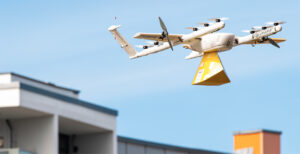

Pingback: Why Chinese Drones are Dominating the Market in 2024: A Detailed Review - Drone Gigs